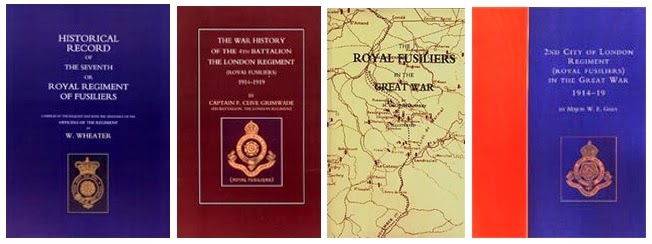
This post will look at army service numbers issued to original members of the 12th Battalion of the Royal Sussex Regiment; also known as the 2nd South Down Battalion.
As with the 11th Royal Sussex (1st South Down), men were - for the most part - grouped alphabetically by the first letter of their surname and then numbered. This system of mostly alphabetical grouping was in operation up to and including number SD/2199. From SD/2200 to to SD/2453 there appears to be no alphabetical patterning and the numbers were issued sequentially between approximately December 1914 and June 1915.
There are plenty of surviving service and pension records for men of the 2nd South Down battalion and a lot of these are available on-line via Ancestry. I've also given links to the Ancestry landing page on some names / numbers below.
12th (2nd South Down) Battalion, Royal Sussex Regiment
November 1914
SD/1200 - SD/1213
Almost certainly men with prior service. SD/1200 John Bishop, the lowest numbered 12th Battalion man, died in England on 5th December 1914. He is buried at Worthing's Broadwater cemetery. SD/1206 Private Jesse Wilde had seen prior service with the Territorial Force and I'm assuming that the other men within this number range also had some prior military service.
SD/1214 - SD/1215
Unknown
SD/1216 - SD/1244
Alphabetical A to W. Bognor and Bexhill enlistments.
SD/1244 - SD/1247
Unknown
SD/1248 - SD/1511
Alphabetical A to W. A variety of Sussex enlistment locations.
SD/1512 to SD/1561
Alphabetical A to W. Principally Hastings and Bexhill enlistments.
SD/1562 - SD/1571
Probably men with prior military experience. For instance, SD/1571 RSM Frederick John Bartlett was a Boer War veteran.
SD/1572 - 1574
Unknown
SD/1575 - SD/1629
Alphabetical A to W. Principally Eastbourne enlistments.
SD/1630
Unknown
SD/1631 - SD/1647
Alphabetical B to W. Principally Lewes and Brighton enlistments. SD/1633 Private William Jared Brooks is pictured (above) on this post. He was born in Newick, Sussex and he and his younger brother, Sydney Arthur Brooks, joined up together at Brighton on the 11th November 1914. Another local man, SD/1643 Ernest William Plummer possibly joined up with the two Brooks brothers. Sydney Brooks was killed in action on 30th June 1916 and Ernest Plummer was killed in action on 3rd September 1916. William Brooks survived the war and you can read his story and Ernest Plummer's, on my Chailey 1914-1918 website.
SD/1648 - SD/1653
Possibly men with prior military experience. At least three of these six men enlisted at Melton Mowbray and all three lost their lives during the Great War.
SD/1654 - SD/1742
Alphabetical A to W. Mostly Worthing enlistments but also from elsewhere in Sussex and, curiously (for me at this point in time), more from Melton Mowbray.
SD/1743
Unknown
SD/1744 - SD/1753
Possibly men with prior military experience.
SD/1754
Unknown
SD/1755 - SD/1784
Alphabetical A to W. A variety of Sussex enlistment locations.
SD/1785
Unknown
SD/1786 - SD/1827
Alphabetical A to W. A variety of Sussex enlistment locations but the majority enlisting at Eastbourne.
SD/1828 - SD/1829
Unknown
SD/1830 - SD/1837
Alphabetical A to W. A variety of Sussex enlistment locations.
SD/1838 - SD/1848
Alphabetical B to T. Hastings enlistments.
SD/1849
Unknown
SD/1850 - SD/1859
Alphabetical C to S. Mostly Hastings, Bexhill and Crawley enlistments.
SD/1860 - SD/1923
Alphabetical A to W. Mostly Hastings and Bexhill enlistments.
SD/1924
Unknown
SD/1925 - SD/1936
Alphabetical A to W. Mostly Horsham and Eastbourne enlistments.
SD/1937
Unknown
SD/1938 - SD/1945
Alphabetical B to T. Mostly Eastbourne enlistments.
SD/1946 - SD/2005
Alphabetical A to W. A variety of enlistment locations both from within Sussex but also from London and Suffolk and possibly other counties.
SD/2006 - SD/2022
Alphabetical B to W. Hove and Brighton enlistments, possibly other Sussex locations.
SD/2023
Unknown
SD/2024 - SD/2069
Alphabetical B to W. A variety of enlistment locations.
SD/2070 - SD/2074
At least three of these men enlisted in Northumberland and had connections with Ashington in that county. All three were killed in action on 10th May 1916.
SD/2075 - SD/2131
Alphabetical A to W. A variety of Sussex enlistment locations but with the majority enlisting at Bexhill and Hastings. SD/2118 Private Alfred Rice was killed in action on 21st October 1916 in the attempt by the battalion to capture the Schwaben Redoubt. He was one of four brothers killed during WW1.
SD/2132 - SD/2199
There appear to be various alphabetical sequences within this range although they are less clearly defined. The last man on my database within this range is SD/2177 John Benjamin Henry Pearson who joined the battalion on 11th November 1914. (Note however that other men with lower numbers than him, joined later in the month).
As I mentioned at the start of this post, from SD/2200 to to SD/2453 there appears to be no alphabetical patterning and the numbers were issued sequentially between approximately December 1914 and June 1915. Here are some sample army service numbers and joining dates for this range.
SD/2200 joined on 25th January 1915
SD/2274 joined on 8th February 1915
SD/2305 joined on 6th March 1915
SD/2379 joined on 6th May 1915
SD/2421 joined on 10th June 1915
All of the above five men have surviving pension records in the WO 364 series. Now on-line.
The last number on my database for original enlistments into the 12th Battalion, Royal Sussex Regiment is SD/2426 Frederick Wilkins, and he joined up on 16th June 1915.
Also see:
Paul Reed's page on the 12th Battalion, Royal Sussex Regiment (2nd South Downs) and the South Downs Battalions website.
Looking for medals? I have Royal Sussex Regiment medals for sale,including medals to men who served with the South Down battalions.
I also offer a comprehensive, fast and cost-effective military history research service. Follow the link for more information.











